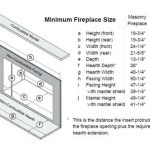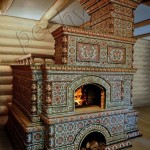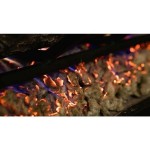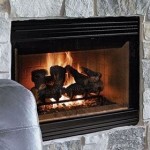Converting a Coal Fireplace to Gas: A Comprehensive Guide
Converting a coal fireplace to gas is a significant undertaking that can enhance convenience and potentially improve energy efficiency. This conversion process involves several crucial steps, from initial assessment and planning to professional installation and safety checks. A thorough understanding of these steps is essential for a successful and safe transition.
Before initiating the conversion, it is imperative to understand local regulations and building codes pertaining to gas fireplace installations. These regulations often dictate specifics regarding venting requirements, gas line sizing, and required safety features. Contacting the local permitting office or a qualified professional can provide clarity on these requirements and prevent potential compliance issues later in the process.
Assessment and Planning
The initial phase of converting a coal fireplace to gas involves a comprehensive assessment of the existing structure and fuel source. This assessment helps determine the feasibility of the conversion, identifies potential challenges, and informs the selection of appropriate gas fireplace components. Key aspects of this assessment include:
*Fireplace Condition:
A thorough inspection of the existing fireplace structure is crucial. Look for cracks, crumbling mortar, or other signs of deterioration that could compromise the safety and integrity of the gas fireplace. Addressing structural issues is paramount before proceeding with the conversion. The chimney should be inspected for blockages and structural damage. *Chimney Evaluation:
The chimney plays a critical role in venting combustion byproducts safely. Examine the chimney for cracks, leaks, or blockages. A chimney liner may be necessary, especially if converting to a direct-vent gas fireplace. Professional chimney sweeps are equipped to assess the chimney's condition and recommend necessary repairs or upgrades. The type of gas fireplace selected will dictate the specific venting requirements. *Gas Line Availability:
Determine the proximity of an existing gas line and its capacity to handle the additional load of the gas fireplace. If a gas line is not readily available, installing a new one will be necessary. This requires careful planning and professional installation to ensure it meets safety standards and provides adequate gas flow. Gas line sizing is critical for efficient operation and must be calculated based on the fireplace's BTU requirements and the length of the gas line. *Fireplace Type Selection:
Consider the different types of gas fireplaces available, each with its own venting requirements and aesthetic characteristics. Options include direct-vent, vent-free, and B-vent fireplaces. Direct-vent fireplaces are generally considered the safest option as they draw combustion air from outside and vent exhaust gases directly outside, preventing the introduction of fumes into the home. Vent-free fireplaces, while offering installation flexibility, require careful consideration due to concerns about indoor air quality. B-vent fireplaces utilize the existing chimney for venting but require adequate chimney draft. *Budgeting:
Establish a realistic budget that encompasses all aspects of the conversion, including materials, labor, permits, and potential unforeseen expenses. Obtain quotes from multiple qualified professionals to ensure competitive pricing. Factor in the cost of the gas fireplace unit itself, as well as installation-related expenses such as gas line modifications, chimney liner installation, and any necessary structural repairs.Once the assessment is complete, develop a detailed plan that outlines the scope of work, timeline, and budget. This plan will serve as a roadmap for the conversion process and help ensure a smooth and successful outcome.
Installation Process
The installation process should be performed by a certified gas fireplace installer or a qualified HVAC professional. This ensures adherence to safety standards and compliance with local codes. The installation process typically involves the following steps:
*Preparation:
The work area should be properly prepared, including protecting surrounding surfaces and ensuring adequate ventilation. The existing coal fireplace should be thoroughly cleaned and any remaining coal or ash removed. The hearth should be inspected for stability and any necessary repairs should be made. *Gas Line Installation/Modification:
If a new gas line is required, it should be installed according to local codes and regulations. This may involve trenching and running the gas line from the meter to the fireplace location. Existing gas lines may need to be modified or extended to accommodate the gas fireplace's connection point. All gas line connections must be leak-tested to ensure safety. *Venting Installation:
The venting system must be installed according to the manufacturer's instructions and local codes. For direct-vent fireplaces, this involves creating an outside vent termination point and connecting it to the fireplace unit. For B-vent fireplaces, the existing chimney must be inspected and potentially lined to ensure proper draft and prevent the leakage of combustion gases. *Fireplace Installation:
The gas fireplace unit is carefully positioned and secured within the existing fireplace opening. Connections are made to the gas line and venting system. Electrical connections may also be required for certain features such as blowers or remote controls. The fireplace unit should be level and properly aligned within the opening. *Testing and Calibration:
After installation, the gas fireplace should be thoroughly tested to ensure it operates safely and efficiently. The gas pressure should be checked and adjusted according to the manufacturer's specifications. The venting system should be inspected for proper draft and the absence of leaks. The pilot light and burner should be adjusted for optimal flame appearance and heat output.Throughout the installation process, meticulous attention to detail and adherence to safety precautions are paramount. Proper installation is critical for the safe and efficient operation of the gas fireplace.
Safety Considerations and Maintenance
Safety is the utmost priority when converting a coal fireplace to gas. Regular maintenance and adherence to safety guidelines are essential for preventing accidents and ensuring the long-term safe operation of the gas fireplace. Important safety considerations include:
*Carbon Monoxide Detectors:
Install carbon monoxide detectors throughout the home, particularly near sleeping areas. Carbon monoxide is a colorless, odorless gas that can be produced by malfunctioning gas appliances. Regular inspection and battery replacement of carbon monoxide detectors are crucial. *Gas Leak Detection:
Be aware of the signs of a gas leak, such as a rotten egg smell. If you suspect a gas leak, immediately evacuate the premises and contact the gas company or emergency services. Never use electrical appliances or open flames if you suspect a gas leak. *Regular Inspections:
Schedule annual inspections of the gas fireplace and venting system by a qualified professional. These inspections can identify potential problems before they become serious safety hazards. The inspector will check for gas leaks, venting obstructions, and proper burner operation. *Chimney Maintenance:
Regularly inspect the chimney for cracks, leaks, or blockages. Have the chimney cleaned periodically by a professional chimney sweep to remove creosote buildup, which can pose a fire hazard. Ensure that the chimney cap is in good condition and prevents rain and debris from entering the chimney. *Manufacturer's Instructions:
Always adhere to the manufacturer's instructions for operating and maintaining the gas fireplace. This includes proper ventilation, cleaning procedures, and recommended maintenance intervals. Keep the area around the fireplace clear of flammable materials.By prioritizing safety and adhering to these guidelines, homeowners can enjoy the benefits of a gas fireplace while minimizing potential risks.
Converting a coal fireplace to gas can be a complex process, it is critical to ensure compliance with local regulations and building codes. These regulations often dictate specifics regarding venting requirements, gas line sizing, and required safety features. Contacting the local permitting office or a qualified professional can provide clarity on these requirements and prevent potential compliance issues later in the process. A professional installer will also be aware of current codes and best practices for your area.
The conversion process involves several crucial steps, from initial assessment and planning to professional installation and safety checks. A thorough understanding of these steps is essential for a successful and safe transition. The costs associated with converting a coal fireplace to gas can vary widely depending on the complexity of the project. Factors influencing cost include the type of gas fireplace chosen, the availability of an existing gas line, the condition of the chimney, and labor rates in your area. Obtaining multiple quotes from qualified professionals is essential for establishing a realistic budget.

Federation 300 Gas Burner Jetmaster Fireplaces

Coal Fireplace Restoration Atlanta Repair Burning Stove

Converting An Open Fire To A Gas Direct Fireplaces
Victorian Coal Fireplace Conversion Hearth Com Forums Home

Home Fires 600 Coal Gas Grate Extreme

Converting An Open Fire To A Gas Direct Fireplaces

Bottled Gas Fire Convertible The Robinson Willey Majestic 16 Inset With Lpg Conversion Kit Company
Converting Old Coal Fireplace To Wood Burning Hearth Com Forums Home

How To Turn Coal Burning Fireplace Into Wood Stove Hometalk
Victorian Coal Fireplace Conversion Hearth Com Forums Home








